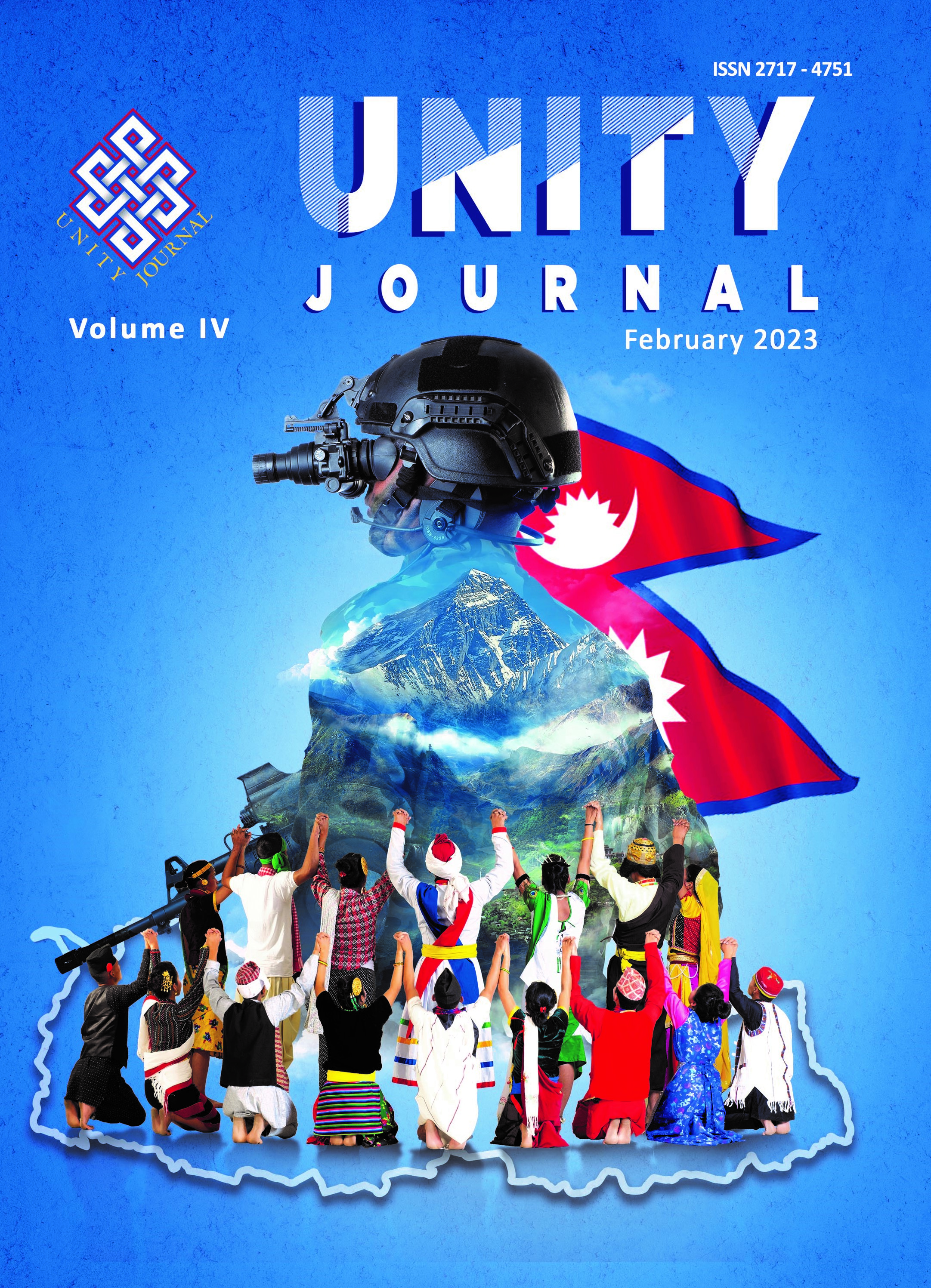American Engagement with Nepal: Concerns of China and India
DOI:
https://doi.org/10.3126/unityj.v4i01.52246Keywords:
Sino-US rivalry, new cold war, Indo-Pacific, power transition, MCC, BRI, geostrategyAbstract
How did the United States of America’s active engagement with Nepal become a strategic concern for our neighbors? The USA’s Nepal policy is changing because the new world order appears to be multipolar consonantly; it is believed to be bipolar between the United States and China strategically. The US strategic entry into Nepal and the intense rivalry over the MCC and BRI projects are a reflection of these two countries' growing competition in world politics. It put Nepal at the center of strategic calculations. At the other end, China and India believe that achieving regional and global hegemony requires first establishing their own regional supremacy. That is why they are considering strategic space in South Asia and Nepal. Furthermore, India and U.S. also have strategic alliances in the Indo-Pacific strategic and QUAD. Both of them perceive China as a threat in the Indo-Pacific region. In this tri-lateral rivalry during the global power transition, Nepal may become a geopolitical flash point, serving the strategic interests of those powers. In this scenario, the significance of Nepal's nonalignment foreign policy will be examined through a comparison of Ukraine's and Nepal's geopolitical locations. Nepal shares borders with two Asian behemoths, much like Ukraine does with NATO countries and Russia. The Ukrainian crisis stems from both domestic and foreign policy failures. Politicians are frequently divided into pro-Russian and pro-Western sides, and they fail to recognize their powerful neighbor's sensitivity. In this study, the qualitative method has been used, and secondary data was collected from reliable books, journal articles, and some authentic websites. Explorative research techniques have been used for this research.
Downloads
Downloads
Published
How to Cite
Issue
Section
License
The articles rest within the authority of the Nepali Army. Only with the Nepali Army's prior permission, can any article in whole or in part from this journal shall be reproduced in any form.

